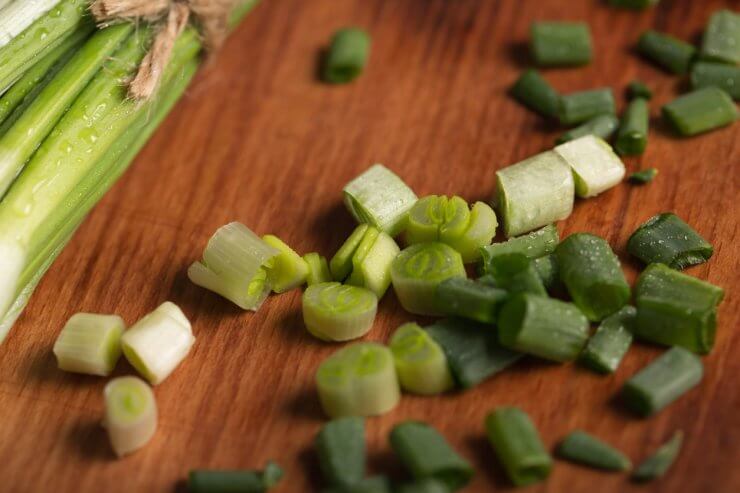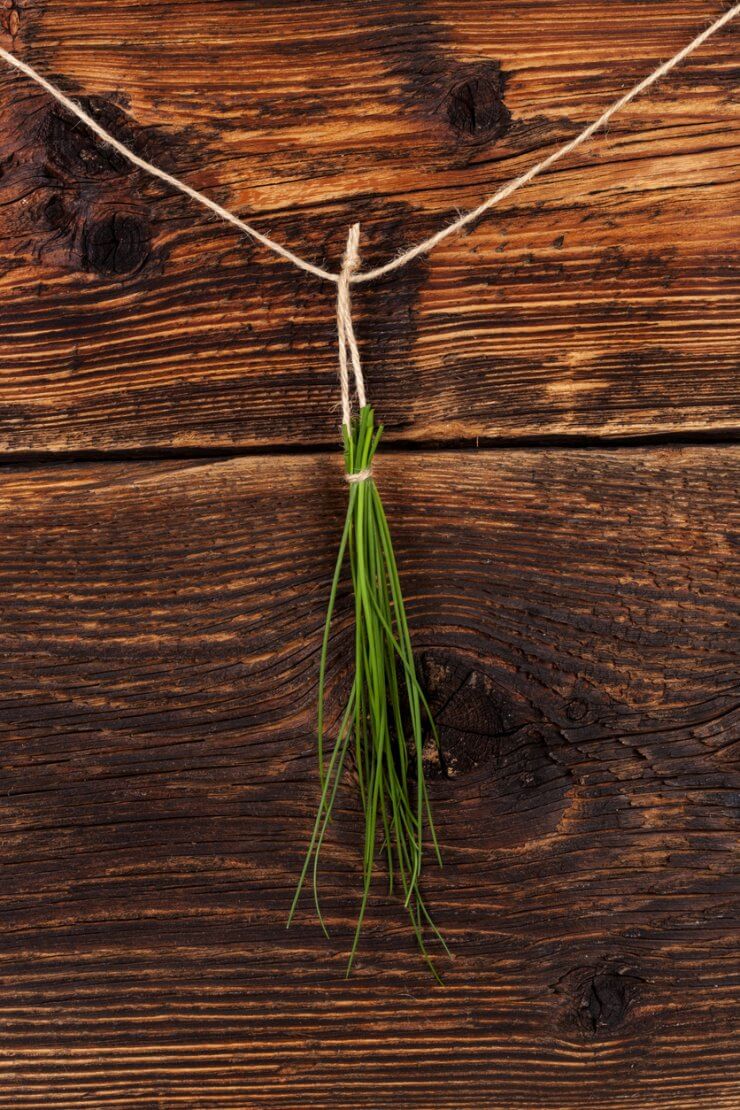
Chives chopped on cutting board
Fresh herbs like chives are ideal for cooking; they get their fragrance and flavor from oils they release when you crush their leaves. The flavor and fragrance are even stronger when you add a little heat and oil.
Freezing in water
In order to retain that fresh-picked fragrance and flavor as much as possible, it’s best if you can freeze your chives when they’re at their peak of freshness—which will happen several times over the summer as new leaves grow.
Cut the leaves at the base, leaving a few inches if you want them to regrow. Wash them thoroughly and set them out to dry on a paper towel. Then chop them into small pieces and put them in ice cube trays. Fill the trays with water. When you have your frozen blocks of chives, transfer them to an airtight bag or freezer container and then use in cooking as needed.
An alternate way to freeze your chives is to chop them, spread them out on a baking sheet covered with waxed paper or parchment paper, and put the tray in the freezer. When the chives are frozen, put them into small freezer bags.
A couple notes about using chives frozen in water. Don’t use them as a garnish; freezing takes away their fresh luster. Also, once you thaw your chives, use them all or compost the leftovers. Don’t ever refreeze frozen herbs.
Freezing in oil
You can also freeze your chives in oil. This is a good choice if you plan to use your chives in cooking or in making herbal spreads.
Chop your chives. Combine 2 cups of chopped chives with 1/3 to 1/2 cup of oil. You can store it in the freezer in a jar and scrape out the amount you need; it won’t freeze solid like it does in water. You can also pour the mixture into ice cube trays that you then seal inside a freezer bag.
Use a neutral flavored oil such as canola oil to let the flavor of your chives shine through. If olive oil enhances the flavor of your chives, then that could be a good choice, too.
If you plan to be baking with your preserved chives or making herbal spreads, you can make a paste of the chives and oil by running it through a food processor before you freeze it.
Note: Do not store fresh herbs in oil at room temperature. They will spoil.
Drying

Freshly harvested chives hanging to dry
You can also dry your harvested chives. While drying is a traditional way of preserving herbs (mint does especially well when dried), chives lose a lot of their flavor in the drying process—they lose those essential oils that carry the flavor.
That being said, dried chives won’t be totally bland; they just won’t have the same flavor power as fresh or frozen. But you can use dried, crushed chives as a garnish for dishes and as flavoring in soups, sauces, and baked goods.
If your harvested chives are clean, don’t get them wet. If they need cleaning, give them a good rinse, shake off the excess water, and lay the leaves out on paper towels or kitchen towels until all surface moisture has evaporated. There’s nothing worse than moldy herbs that you thought were “dry enough.”
Check your chives for dead or damaged leaves and compost those. Then tie your leaves into small bundles, using twine or string. Make sure you make small bundles; too many leaves in a bundle are an invitation to rot and mold. Hang them upside down in a warm, dry, airy place out of the sun. One ideal spot is a cedar closet. Other indoor spots could include an empty closet, a corner of your attic, or even an available corner of a room. Try to keep them out of the sun so it doesn’t leach the flavor of the oils from the leaves.
Other drying methods
If you don’t have the space or the patience for natural drying, you can spread your cut chive leaves on a window screen supported by a couple of chairs or sawhorses. Turn the leaves every day to make sure they get evenly dried.
You can put your chives in the microwave in small batches. Put a single layer of clean, dry chive leaves between layers of paper towels on high for one to two minutes. Let the leaves cool. If they’re not brittle yet, microwave for 30 seconds, let the leaves cool, and retest. Repeat as needed.
You can also use a conventional oven to dry your chives. Spread dry leaves on baking sheets lined with parchment paper. Put in the oven on the lowest heat setting possible; check at least once an hour.
Of course, if you have a food dehydrator, it will do most of the work for you. Just follow the instructions in your user manual.
How frequently do you harvest your chives? Please tell us what you look for when getting ready to harvest and how you preserve your harvest.


 Previous
Previous

